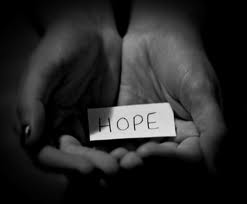Self-Harm
Deep Secrets: The Truth Behind Self-harm
Breaking the stigmas and stereotypes associated with self-harm.
Posted October 14, 2012
Emma sat in the bathroom, door locked with a razor in her hand, blood ran down her arm and dripped onto the floor. Tears streamed down her face as she knew she needed help, but she was afraid to ask for it. What would people think of her? Would they think she was crazy? Would they think she was just trying to get attention? Worse yet, would they think she was a freak? What would people say about her? These very thoughts kept Emma from asking for help. Emma wiped her eyes, blew her nose, and put on her over-sized grunge sweatshirt. She secretly tucked her blade back into its hiding spot. Reaching for the doorknob, Emma composed herself and walked out of the bathroom like nothing had ever happened.

Emma sat in the bathroom, door locked with a razor in her hand, blood ran down her arm and dripped onto the floor. Tears streamed down her face as she knew she needed help, but she was afraid to ask for it. What would people think of her? Would they think she was crazy? Would they think she was just trying to get attention? Worse yet, would they think she was a freak? What would people say about her? These very thoughts kept Emma from asking for help. Emma wiped her eyes, blew her nose, and put on her over-sized grunge sweatshirt. She secretly tucked her blade back into its hiding spot. Reaching for the doorknob, Emma composed herself and walked out of the bathroom like nothing had ever happened.
Research reports one in twelve teens, mostly girls, self-harm and ten percent of them continue to deliberately harm themselves well into young adulthood. Many of these teens need help but are afraid to ask for it. One possible reason for their reluctance is the stigma associated with self-harming behavior and mental health.
Stigmas/Stereotypes with mental health:
There are many stigmas and stereotypes associated with mental health. Most of the stereotypes are attributed to a lack of understanding. Oftentimes people fear something they aren’t sure of or knowledgeable about. Unfortunately, a lack of understanding and knowledge can lead to stigmas and stereotypes which can be very hurtful and canp revent those in need from seeking help. Stereotypes can lead to discrimination, harassment, and low self-esteem.
In general physical illness is accepted more often because it’s easier to understand. People understand Diabetes, for example, because they understand that it’s an illness that calls for medical attention. They accept that. But if you go to see a counselor or psychiatrist oftentimes it’s viewed that something isn’t right with you. This could be farther from the truth! Additionally, many times mental illness is seen as a personal weakness; of which it’s not.
Stigmas are hard to break because they get passed from one person to another. The key to changing a stereotype is to educate, educate, and then educate some more. The more people learn about self-harm and the possible reasons behind it the more they'll realize the distress it causes. Massive education needs to reach everyone throughout the country. It can start in the schools with educating today’s youth through community campaigns, ads, and documentaries.
From a clinical angle, if a self-injurer is working with a counseling professional then he/she can assist in helping his/her client cope with the stigmas associated with mental illness and work on ways to work through them. The last thing a client should have to worry about is how others view them on top of dealing with a mental illness. Family counseling can be done to help the client's family learn more about the self-injurious behavior.
There's nothing wrong with getting mental health help. In fact more people would benefit from seeking the help of a mental health professional. Perhaps if these stigmas didn’t exist more people would be open to accepting and seeking the help that they need.
Self-harm is not a part of "being a teen":

Self-harm is not a part of "being a teen":
The teenage years are oftentimes described as being turbulent. Teens are stereotyped as being moody, irritable, emotional, overly dramatic, attention seeking, and the list go on and on. It’s hard for many people to believe that teens have it so bad that they would want to end their lives or that they have so much inner turmoil that they would resort to self-harm. It’s easier to play off their mental health as a part of adolescence. Unfortunately, these faulty beliefs only help justify stigmas attached to mental illness.
The truth is that teens face an enormous amount of life stressors and pressure. From academics to their social life, many teens are consumed with many difficult life transitions. And yes, to top it off they’re going through puberty. Adolescence isn’t an easy time for teens or their parents. It is important for teens to have safe outlets to express their feelings and concerns. The worst thing we can do is treat the teen as though they don’t have a problem when they do. Teen mental and emotional wellbeing is important and should be taken seriously.
Know the warning signs:
- Many cuts/burns on the wrists, arms, legs, back, hips, or stomach
- Wearing baggy or loose clothes (e.g., wearing hoodies or long sleeves during hot days to conceal the wounds)
- Always making excuses for having cuts, marks or wounds on the body
- Finding razors, scissors, lighters or knives in strange places (i.e., the nightstand drawer or under the bed)
- Spending long periods locked in a bedroom or bathroom
- Isolation and avoiding social situations
If you self-harm:
People care about you and you are not alone. There are people and professionals that can help you learn alternate coping strategies so you don’t have to resort to harming yourself any more. Please reach out to them and get help.
If you know someone who self-harms:
Self-harm is a cry for help. People who self-harm may feel that there is no other outlet to express their emotional pain and cope with distress. People who self-harm don’t do it to seek attention; rather they do it to escape the struggles of their everyday world. If you know someone who is engaging in self-injurious behavior reach out to him or her. Let him/her know you care through getting them the help they need.
Resources:

Resources:
Cornell University Research Center on Self-Injury Family Life Development Center
http://www.crpsib.com/default.asp
S.A.F.E. Alternatives: a program that offers resources, referrals for therapists, and tips on how to end self-injury.
Self Injury Foundation: this foundation promotes awareness for those who self-injure and works to provide funding for research, advocacy, and support for those who self-injure and their families.
Adolescent Self Injury Foundation: an organization that works to raise awareness about adolescent self-injury and provides education, prevention tips, and resources for self-injurious adolescents and their families.
Self-Injury Hotlines:
National Suicide Prevention Hotline:
1-800-273-TALK (8255)
National Self-Injury Helpline:
1-800-DONT-CUT (366-8288)
24-hour Crisis Hotline:
1-800-273-TALK
Self-Injury Foundation:
1-800-334-HELP




